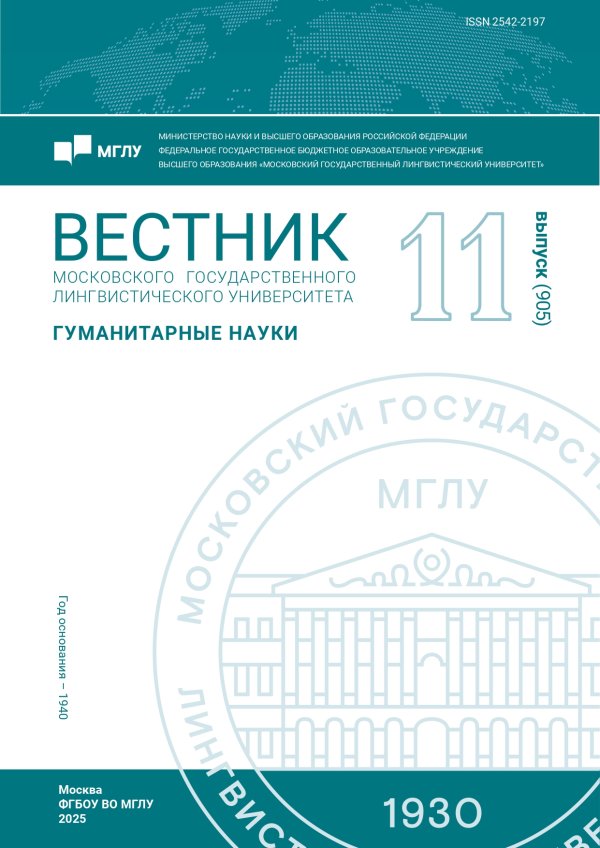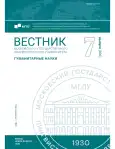Реакция как собирательный образ эмодзи в конфликтном интернет-дискурсе (на материале интернет-комментариев)
- Авторы: Катермина В.В.1, Вульфович Б.Г.1
-
Учреждения:
- Кубанский государственный университет
- Выпуск: № 7(901) (2025)
- Страницы: 60-67
- Раздел: Языкознание
- URL: https://ogarev-online.ru/2542-2197/article/view/303320
- ID: 303320
Цитировать
Полный текст
Аннотация
Целью работы является рассмотрение применения реакций как сосредоточенного коллективного выражения эмоций, определение их отличия от индивидуальных эмоций (эмотиконов) и установление лингвопрагматической информации, которую они могут сообщить при соответствующем анализе в рамках агрессии, вызванной конфликтным интернет-дискурсом, поскольку именно в данной тематической области мы можем наблюдать их наибольшее сосредоточение. Для отбора материалов исследования применяется метод частичной выборки. В результате установлено, что групповые реакции на комментарии становятся средством актуализации отношения к конкретному вопросу определенной группы лиц, и что они обладают большим потенциалом для проведения дальнейших исследований в данной области.
Ключевые слова
Об авторах
Вероника Викторовна Катермина
Кубанский государственный университет
Автор, ответственный за переписку.
Email: katermina_v@mail.ru
доктор филологических наук, профессор, профессор кафедры английской филологии
РоссияБорис Григорьевич Вульфович
Кубанский государственный университет
Email: justb8888@gmail.com
кандидат филологических наук, доцент кафедры английской филологии
РоссияСписок литературы
- Бабук А. В. Эмотиконы и эмодзи в интернет-коммуникации // Журналистика – медиалогия – наставничество: материалы Международной научно-практической конференции, посвященной памяти профессора Б. В. Стрельцова, Минск, 1 марта 2023 года / редкол.: Е. Р. Хмель (гл. ред.) [и др.]. Минск: БГУ, 2023а. С. 13–17.
- Chen Y. et al. Individual differences in emoji comprehension: Gender, age, and culture / Y. Chen, X. Yang, H. Howman, R. Filik // PLoS ONE. 2024. No. 19 (2). e0297379. doi: 10.1371/journal.pone.0297379.
- Danesi M. The Semiotics of Emoji. Dublin: Bloomsbury Academic, 2016.
- Kaye L. K., Malone S. A., Wall H. J. Emojis: Insights, affordances, and possibilities for psychological science // Trends in Cogn Sci. 2017. No. 21 (2). P. 66–68. doi: 10.1016/j.tics.2016.10.007.
- Бабук А. В. Семиотика эмодзи и выявление вербальной угрозы в текстах интернет-коммуникации при про ведении судебной лингвистической экспертизы в Республике Беларусь // Современный медиатекст и судебная экспертиза: междисциплинарные связи и экспертная оценка: сб. науч. работ по итогам Международной научно-практической конференции. Москва, 12–13 октября 2023 года. М.: Союзкниг, 2023б. С. 16–34.
- Nekrasov M., Parks L., Belding E. Limits to Internet freedoms: Being heard in an increasingly authoritarian world // Proceedings of the Third Workshop on Computing within Limits, ACM LIMITS ’17. New York: Association for Computing Machinery, 2017. P. 119–128.
- Guseynova I., Gorozhanov A. Un-Words as a Factor of Ideologization in the Modern German Political Discourse // Science Journal of Volgograd State University. Linguistics. 2024. Vol. 23. No. 4. P. 84–95. DOI 10.15688/ jvolsu2.2024.4.7. EDN XMNCZX.
- Гусейнова И. А., Горожанов А. И. Идеология как фактор перевода: традиции в инновациях // Вестник Волгоградского государственного университета. Серия 2: Языкознание. 2023а. Т. 22. № 3. С. 67–76. DOI 10.15688/ jvolsu2.2023.3.6. EDN CPMSKP.
- Гусейнова И. А., Горожанов А. И. Коннотированный образ как способ конструирования информационного противостояния в художественно-публицистическом жанре // Журнал Сибирского федерального университета. Серия: Гуманитарные науки. 2023б. Т. 16. № 6. С. 911–920. EDN HZMXIN.
- Катермина В. В, Вульфович Б. Г. Лингвопрагматический потенциал политического интернет-дискурса // Актуальные проблемы филологии и педагогической лингвистики. 2019. № 2. С. 19–26.
- Филиппова М. П. Интернет-комментарий и сообщение на интернет-форуме: параметры жанрового разграничения // Вестник Удмуртского университета. 2002. Т. 30. Вып. 6. С. 1049–1054.
- Курилова Е. В. Лингвокоммуникативная экспликация эмоций в англоязычных и испаноязычных интернет- комментариях на тему вакцинации от СOVID-19 // Вестник Томского государственного педагогического университета. 2024. № 4 (234). С. 41–49.
- Миронова Н. И. Особенности эмоциональной реакции на текст-конфликтоген в интернет-комментариях // Российская психолингвистика: итоги и перспективы: Материалы XX Международного симпозиума по психолингвистике и теории коммуникации, Москва, 27–28 мая 2022 года. М.: РУДН, 2022. С. 80–81.
Дополнительные файлы











